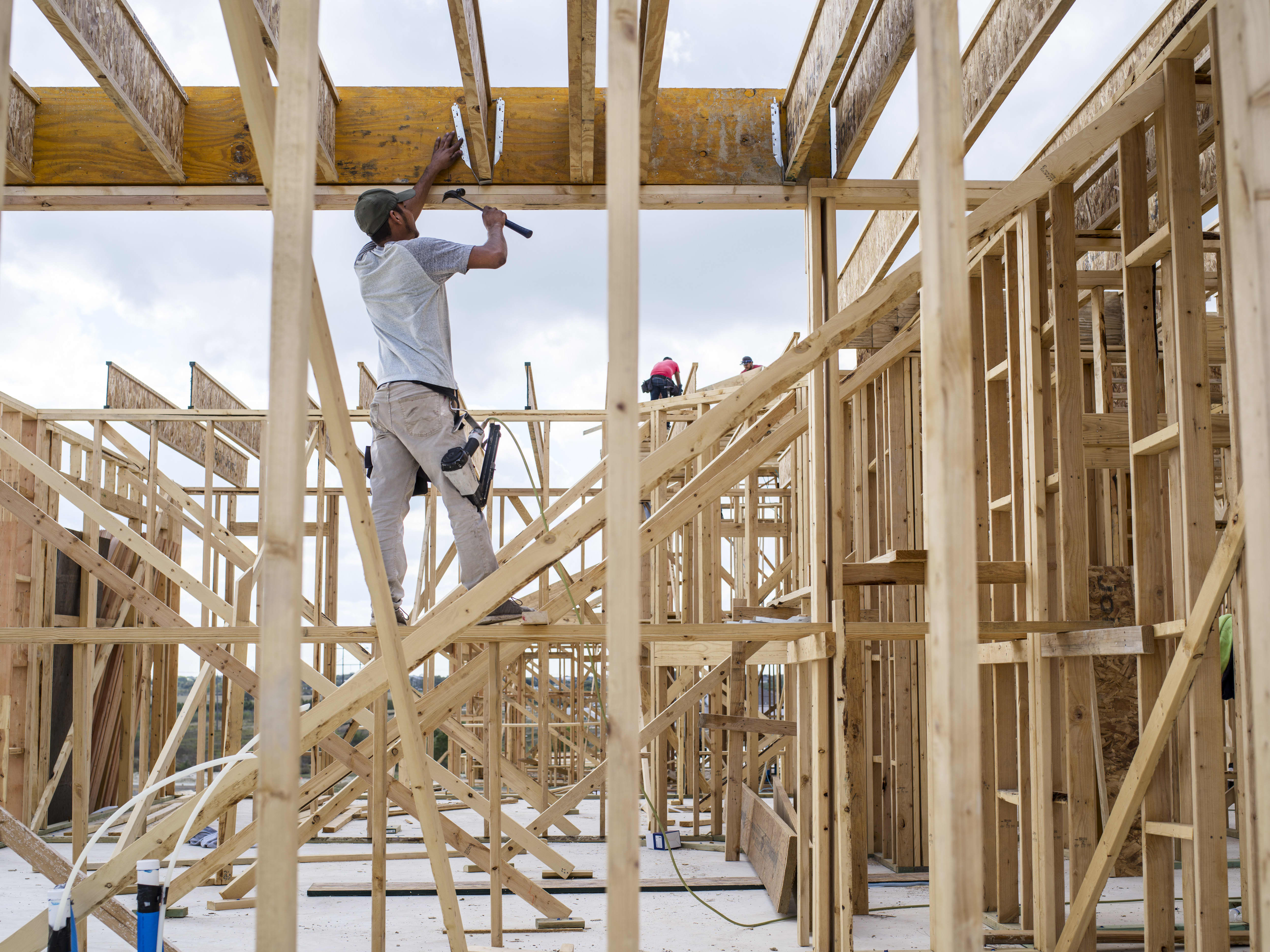Products You May Like
Surprisingly strong housing demand, even in the usually slower season for housing, has homebuilders feeling increasingly confident.
Builder sentiment in the single-family housing market rose one point to 84 in December, on the National Association of Home Builders/Wells Fargo Housing Market Index, or HMI. That is the fourth consecutive increase and ties with February for the highest level of the year. Anything above 50 is considered positive sentiment.
The increase comes despite concerns over inflation, supply-chain disruptions and an ongoing labor shortage. Prices for wallboard, steel, aluminum and plastic construction products rose sharply in November, according to the producer price index.
“While demand remains strong, finding workers, predicting pricing and dealing with material delays” remain challenging, said NAHB Chairman Chuck Fowke, a homebuilder from Tampa, Florida.
Builders continue to benefit from the incredibly lean supply of existing homes for sale. They’re also seeing high demand from investors, as the build-for-rent sector continues to gain steam. The number of single-family built-for-rent construction starts reached its highest quarterly volume on record during the third quarter of 2021.
There are hurdles ahead, especially given how high prices have jumped recently. The cost of a newly built home jumped 17.5% year over year in October, according to the U.S. Census. Mortgage rates are also expected to rise markedly as the Federal Reserve eases its support for mortgage-backed bonds to contend with surging inflation.
“While 2021 single-family starts are expected to end the year 24% higher than the pre-Covid 2019 level, we expect higher interest rates in 2022 will put a damper on housing affordability,” said NAHB chief economist Robert Dietz.
Of the HMI’s three components, current sales conditions rose one point to 90, and buyer traffic also rose one point to 70. Sales expectations in the next six months was unchanged for the third consecutive month at 84.
Looking at the three-month moving averages for regional HMI scores, the Northeast rose 4 points to 74, the Midwest increased 2 points to 74 and the South and West each posted a three-point gain to 87, respectively.

